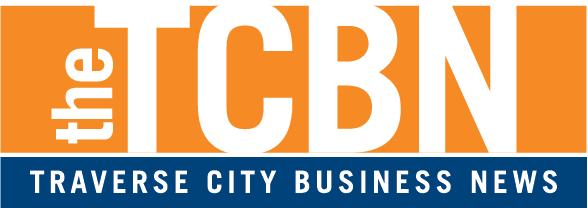Traverse City Business News August 2021 by Craig Manning
Could Traverse City become the world’s leading hub for freshwater research, policy and technology?
Entrepreneur Casey Cowell has been wondering about that question for years. Or, perhaps more accurately, he’s wondered why Traverse City wouldn’t be a global leader in the freshwater economy.
All the ingredients are right there: A location just a stone’s throw from the shores of one of the world’s richest freshwater resources; a community college with highly respected programs in freshwater studies, marine technology and maritime activity; and a growing business community with a thriving startup climate.
With the right approach, Cowell says he is confident that these components could be leveraged into a transformative freshwater initiative, one that would not only act as a shot in the arm for the local economy, but that could also make a global difference in the way people approach, understand and innovate around fresh water.
Cowell is a familiar face when it comes to efforts around trying to take Traverse City’s business economy to the next level. After making his fortune as a co-founder of U.S. Robotics, Cowell moved to northern Michigan in the 1990s. He’s since started his own investment group, Boomerang Catapult, which works to take local startups national and to bring national companies to Traverse City. He also helped to launch the local startup incubator, 20Fathoms, and is a major local philanthropist.
Perhaps it’s no surprise that someone who sold their first company in a multi-billion-dollar deal would have some ambitious visions for the future of the town he chose to call home. Such is the case with Cowell, who hasn’t been shy about his desires to scale back Traverse City’s reliance on tourism and hospitality, and to accelerate the many other industries with potential to gain a foothold here. His idyllic version of Traverse City wouldn’t just be a freshwater studies epicenter, but also a hub for healthcare and health technology, drone technology, and agricultural technology, to name a few.
But fresh water might just be northern Michigan’s greatest economic opportunity, simply because very few other places in the world can compete with what Traverse City has right out its back door.
As Cowell explains it, any research university could do theoretical studies and lab experimentation on matters that relate to freshwater technology and policy. But not many schools in the United States are set up to do the practical, hands-on work that researchers can do here, thanks to the proximity of Grand Traverse Bay and Lake Michigan.
Hans Van Sumeren, the director of the Great Lakes Water Studies Institute at Northwestern Michigan College (NMC) echoes Cowell’s comments. Van Sumeren earned his bachelor’s and master’s degrees in marine engineering from the University of Michigan and spent more than a decade of his career there, first as a research associate in the ocean engineering lab and then as the associate director for the marine hydrodynamics laboratory.
But Van Sumeren was drawn away from Ann Arbor and toward Traverse City by the prospect of getting to do hands-on work in the Great Lakes.
These days, NMC is a common partner for other research universities that want to do work related to freshwater studies. Recently, for instance, the college worked with Michigan Tech and Purdue universities to submit a funding proposal to the National Science Foundation for just such a project.
“(The project) is about fast-tracking development of a new product from a research perspective, but then also applying it to commercial availability,” Van Sumeren explained. “And this was to network autonomous underwater vehicles so they can communicate underwater without any human interaction, and then drive decision-making for the betterment of understanding of things that occur on the bottom of the lakes – whether it’s fisheries, habitat, or water quality implications.”
As partners, Van Sumeren says Michigan Tech and Purdue represented the theoretical research, which he calls “extremely important” to this kind of project.
“But then we represent the workforce that then utilizes these products,” he said. “Without our part, their parts are just research.”
It’s that ground level understanding of freshwater resources and needs that Cowell is counting on when he says Traverse City could be a global leader in freshwater innovation, policy-making and more.
Sensors that can detect algae, E. coli, and other freshwater contamination issues early, so that they can be addressed before they cause problems; filtration systems to protect the world’s freshwater resources, particularly as those resources become the most crucial assets on the planet; research that drives decision-making and policy for the Great Lakes – like measures to combat invasive species, or answers for how to move forward with Enbridge Line 5. These are just a few of the areas where Cowell sees opportunities for Traverse City to set itself apart as a hub for innovation and research.
Cowell and Van Sumeren agree that the foundation for that potential is already thriving in northern Michigan, thanks largely to NMC and its programs. Cowell, for instance, sees NMC and Traverse City becoming the Great Lakes equivalent of the Woods Hole Oceanographic Institute in Massachusetts, which plays a key role in driving decision-making and policy around the oceans.
Van Sumeren, meanwhile, believes NMC is already starting to play that kind of role. Many graduates, he notes, work in dredging, a crucial component of Great Lakes restoration and protection. Others have been central to Traverse City’s FishPass effort – which, while it has become controversial recently over public property use rights, could still play an important role in mitigating the passage of invasive species upstream.
Perhaps most significantly, NMC is one of the leaders behind Lakebed 2030, an initiative intended to comprehensively map the entire Great Lakes by 2030.
“We only know five percent, in any detail, of what’s on the bottom of the Great Lakes – less than the oceans, less than the surface of Mars,” he said. “What we think is so well understood is probably the least understood.”
Lakebed 2030 would rewrite the book on the Great Lakes, with potential implications for future freshwater discoveries, regulations and innovations.
For his part, Cowell is ready for a “cluster” to start forming of local freshwater technology startups – companies that could provide work opportunities for graduates from NMC’s freshwater studies and marine technology programs, as well as draw highly skilled professionals to the area from elsewhere.
“These are the pieces upon which we could begin to organize investment into startups or extension of existing companies, and start to get a concentrated effort or a community of interest around (freshwater technology),” Cowell said. “And when that happens, when you have multiple enterprises, more jobs are created.”
More startups mean more flexibility for job seekers and more investment in the local economy, says Cowell.
“If somebody comes here to work and they’re concerned about, ‘If it doesn’t work out with this company, what do I do?’ Well, if there are 17 other companies in the industry near here, you can get a job,” he said. “And as more startups happen, it attracts more investment. So, focusing on these concentrated areas, if we can identify them, is really beneficial.”
Already, Cowell’s goal of building Traverse City’s academic focus on freshwater studies into a community of private-sector companies that can develop “commercializable technology” in that niche – is starting to take form.
The seeds were planted with a group of students who, as part of a project for a 200-level class in the marine technology department, developed an unmanned aircraft system (UAS) that can fly through the air like a regular drone but also land on water to deploy a tether-connected submersible remote operated vehicle (ROV).
The resulting amphibious drone technology pairing UAS and underwater ROV capabilities can be used “to collect both subsea and aerial data.” Cowell’s Boomerang Catapult invested substantially in the startup.
“It’s a UAS system that can land on water and deploy an underwater sensor device, to go do work in areas that may be hazardous or inaccessible by a human,” Van Sumeren said of the Catalina, a hybrid robotics innovation. “That’s a pretty strong testament to what we can do here: (To go) from students who were in a 200-level class to now receiving big dollar support for the development of a product that adds value worldwide.”
As more companies like Hybrid Robotics take root locally, Cowell says the vision of a freshwater technology hub in northern Michigan is coming more and more into focus.
“The first few are the hardest,” Cowell said of building a startup cluster in a specific industry. “But if you can get three to five companies functioning, then you have a core.
“And then it’s sort of like autopilot: We can move on to the next thing, and this will start to have a really good chance (to succeed).”
NMC President Nick Nissley is cognizant of both the economic potential of Traverse City as a freshwater hub and the environmental importance of the Great Lakes as a whole.
Those factors are on his mind as he helps spearhead a strategic planning effort for the future of the college – as are the partnerships that are growing NMC’s status as an authority on freshwater research and the reputations that NMC’s water-centric programs have among employers (the school’s marine technology program, for instance, has a track record of 100% employment placement for graduates).
“I think we are all – whether it’s Hans, or me, or Casey, or (local nonprofit) Discovery Center-Great Lakes, or Michigan Tech – we’re all circling around this vision of (becoming) the Wood’s Hole of the Great Lakes,” Nissley said. “How do we build that capacity and those capabilities here, around the blue economy of the Great Lakes?”
Nissley says there is a “lot” of energy around that conversation, which has its roots in the college’s founding.
“I recently found in our archives a college catalog from 1951, the first year we were founded, and it had a tagline of sorts that said, ‘Community Centered, Community Serving,’” he said. “I think that speaks to what we’ve done for the last 70 years.”
With the community’s needs changing, Nissley says the college’s role will continue to support that trajectory.
“We’ve been connected to the community and the community’s needs, and today those community needs are around growing this new blue economy, and around how we can connect with keeping the lakes good for future generations,” he said. “And that’s the work we’re doing.”


 Traverse City Business News
August 2021
by Craig Manning
Traverse City Business News
August 2021
by Craig Manning

